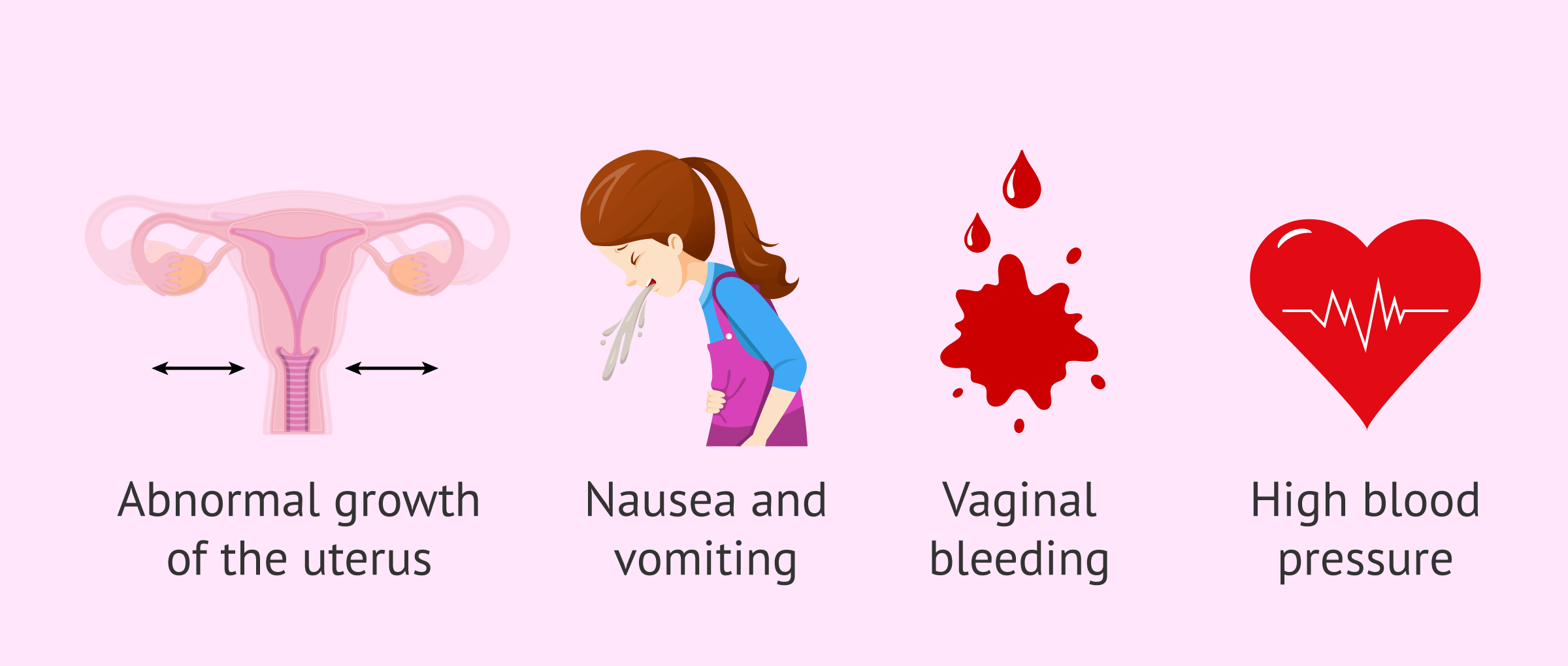Molar Pregnancy also known as a hydatidiform mole, is an abnormality of pregnancy characterized by the abnormal growth of trophoblasts, the cells that normally develop into the placenta. Instead of forming a healthy placenta to support the growth of a fetus, the trophoblasts develop into a mass of cysts. This condition can be classified into two main types: complete molar pregnancy and partial molar pregnancy.
Types:
- Complete Molar Pregnancy:
- In a complete molar pregnancy, an empty egg (ovum) is fertilized by a sperm, or two sperm fertilize an empty egg. This results in the absence of a normal fetus.
- The placenta develops into a mass of cysts resembling a bunch of grapes.
- There is no normal embryonic or fetal development.
- Partial Molar Pregnancy:
- In a partial, a normal egg is fertilized by two sperm (dispermy) or a single sperm that duplicates its genetic material (digyny).
- This leads to the presence of some fetal development, but the embryo is not viable.
- The placenta still forms cysts, similar to those seen in a complete molar pregnancy.
Symptoms:
- Vaginal bleeding
- Severe nausea and vomiting (hyperemesis gravidarum)
- Enlarged uterus
- High blood pressure
- Excessive growth of the uterus for the gestational age
Diagnosis: Molar pregnancies are often diagnosed through ultrasound, which can reveal the characteristic appearance of the cystic placental mass. Blood tests to measure human chorionic gonadotropin (hCG) levels are also used for diagnosis and monitoring.
Treatment: The primary treatment for a molar pregnancy is the removal of the abnormal tissue through a surgical procedure called dilation and curettage (D&C). After the procedure, close monitoring of hCG levels is crucial to ensure the complete removal of abnormal tissue. Follow-up is essential to detect and manage any potential complications.
Prognosis: Most women who have had a molar pregnancy can go on to have normal pregnancies in the future. However, regular follow-up and monitoring are important, as there is a slightly increased risk of a repeat molar pregnancy. In some cases, persistent gestational trophoblastic disease may occur, requiring additional treatment.
Who is likely to have a molar pregnancy?
Molar pregnancies are rare, and they can occur in women of childbearing age. While there is no specific profile that predicts who is likely to have a molar pregnancy, certain factors may increase the risk. These factors include:
- Age: Molar pregnancies are more common in women under the age of 20 and over the age of 35.
- History of Molar Pregnancy: Women who have had a previous molar pregnancy are at an increased risk of experiencing it again in subsequent pregnancies.
- History of Miscarriage or Stillbirth: Women who have a history of miscarriage or stillbirth may have a slightly higher risk of molar pregnancy.
- Maternal Diet Deficiencies: Some studies suggest that dietary factors, such as a lack of certain vitamins and minerals, may be associated with an increased risk of molar pregnancy.
- Asian Descent: Molar pregnancies appear to be more common in women of Asian descent, particularly women from Southeast Asia.
- Maternal Age: There is a slightly increased risk in women under the age of 20 and over the age of 35.
It’s important to note that while these factors may be associated with an increased risk, the majority of women who experience molar pregnancies do not have any of these risk factors. Molar pregnancies often occur sporadically, and the exact cause is not always clear.
If a woman experiences symptoms such as vaginal bleeding, severe nausea and vomiting, an enlarged uterus, or other signs of a molar pregnancy, it’s crucial to seek medical attention promptly. Early diagnosis and appropriate management, typically through a surgical procedure called dilation and curettage (D&C), are essential for the best possible outcome. Regular follow-up and monitoring after treatment are also important to detect and address any potential complications.



[…] often used in prenatal screening to assess the risk of chromosomal abnormalities in the developing fetus. Common tests include amniocentesis and chorionic villus sampling […]
[…] form in the kidneys and can cause significant pain and other symptoms. These stones are made up of minerals and salts that crystallize and stick together. The size of kidney stones can vary, and they can […]
[…] screening involves testing the fetus for genetic disorders or chromosomal abnormalities during pregnancy. This screening can detect conditions such as Down syndrome, cystic fibrosis, and neural tube […]
[…] Osteoclasts are responsible for bone resorption, breaking down bone tissue to release minerals into the […]
[…] pre-existing health conditions. However, the prevalence is increasing due to factors such as rising maternal age and obesity rates. Women who are overweight or have a family history of diabetes are at higher […]
[…] The triple screen test, also known as the triple marker test, is a prenatal screening test used to assess the risk of certain birth defects in the fetus. […]
[…] 13 instead of the usual two. Patau syndrome affects both males and females, and it can occur in pregnancies whether or not the parents have previously had a child with the condition. It’s important for […]